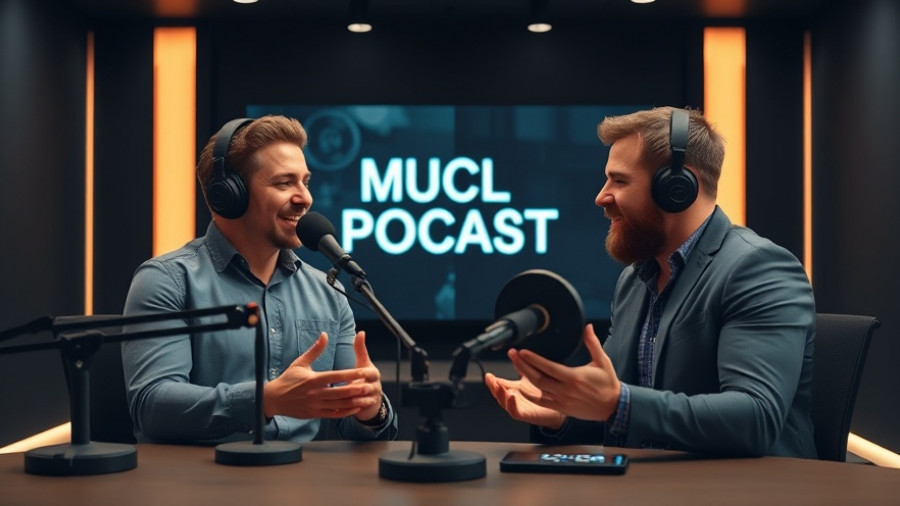
Preserving Muscle Mass: The Key to Aging Gracefully
As we age, the battle against muscle loss becomes one of the toughest challenges we face in our quest for longevity and vibrant health. In my recent dive into insights from the enlightening video, "How Older Adults Can Stop Muscle Loss", presented by Rhonda Patrick, Ph.D., I discovered some game-changing strategies that can help maintain muscle mass even as we gracefully add candles to our birthday cake. Understanding how to preserve muscle is not just about aesthetics; it plays a crucial role in our overall health, mobility, and proactive disease prevention.
In 'How Older Adults Can Stop Muscle Loss', the discussion dives into vital prevention strategies against muscle loss, prompting a deeper analysis of effective techniques and expert insights for maintaining muscle as we age.
Understanding Muscle Loss: A Necessary Evil?
Muscle loss, or sarcopenia, is a natural part of aging, but that doesn't mean we need to surrender to it without a fight! According to Patrick, our muscle fibers begin to decline in number and size after the age of 30, making it essential to adopt proactive strategies early. The consequences of muscle loss are substantial, contributing to frailty, decreased functional ability, and increased fall risk. This is where active intervention becomes your secret weapon!
Exercise: The First Line of Defense
Staying active is the cornerstone of combating muscle loss. Patrick emphasizes the importance of resistance training as part of a healthy lifestyle. Incorporating strength exercises at least two to three times per week can stimulate muscle protein synthesis. Think of your muscles as champions—they need to be challenged to grow stronger! Exercising with weights, resistance bands, or body-weight movements can significantly enhance muscle retention and even promote muscle gain.
Nutritional Mavericks: Foods to Fuel Your Muscles
Your diet plays an equally pivotal role in preserving muscle mass. Patrick recommends focusing on a diet rich in protein—preferably high-quality sources like lean meats, fish, poultry, dairy, or plant-based alternatives. The idea is to consume adequate protein at every meal to ensure your body has the building blocks it needs for muscle recovery and growth. Not all proteins are created equal, so aim for complete proteins that provide essential amino acids!
Supplements: Do You Really Need Them?
Let’s face it; we’re often bombarded with supplement ads promising miraculous results, but not all of them deliver. That said, Patrick mentions some valuable supplements that can aid in muscle preservation and longevity. Omega-3 fatty acids, vitamin D, and even creatine can all contribute positively. However, before you start popping pills, it’s wise to consult with a healthcare professional to ensure your regimen aligns with your individual needs.
Hydration: The Unsung Hero
Did you know that hydration fuels your muscle function? That’s right! Often overlooked, staying hydrated is crucial for optimal cellular health and performance. Dehydration can lead to muscle cramps, fatigue, and deterioration in muscle function. So, keep that water bottle handy—I’m not saying turn into a fish, but drinking water should be a priority!
Sleep and Recovery: The Terraforming Aspect of Muscle Building
Sleep is often the vampire hiding in plain sight of our wellness routines. It’s during deep sleep that our bodies regenerate and promote recovery processes, including muscle repair. Patrick emphasizes that sufficient sleep is non-negotiable when it comes to maintaining muscle and resisting aging. Aiming for 7-9 hours of quality sleep per night should be your golden rule.
Engaging the Mind: Mental Fitness Matters
Here’s an interesting twist—did you know that mental fitness can play a crucial role in your physical health? Engaging in learning, creativity, and social activities can aid in promoting cognitive function, which has been correlated with better health outcomes as we age. So, grab that paintbrush, or join a local book club, and keep those neurons firing!
Your Strategic Plan for Muscle Health
With all these strategies in mind, creating a personalized plan for your muscle health is essential. Begin by integrating resistance training into your routine combined with a protein-rich diet, prioritizing hydration and quality sleep, alongside keeping your brain engaged. Remember that it’s not a race, but a journey—every small step counts towards achieving your long-term health goals.
The Bottom Line: Age Is Just a Number!
If there's one takeaway from all of this, it’s that aging doesn’t have to equal decline. Armed with the right information and strategies from Rhonda Patrick's insights, you can actively shape your health trajectory. Muscle preservation is crucial not only for physical health but also for preserving independence and enhancing quality of life as we age.
Ready to take charge of your health? Let’s embrace these multifaceted strategies and unlock our potential for a long, fulfilling life! For those inspired by this knowledge and looking to enhance their wellness journey, consider tracking your progress in implementing these practices, and remember: progress, not perfection, is key!
 Add Row
Add Row  Add
Add 




Write A Comment